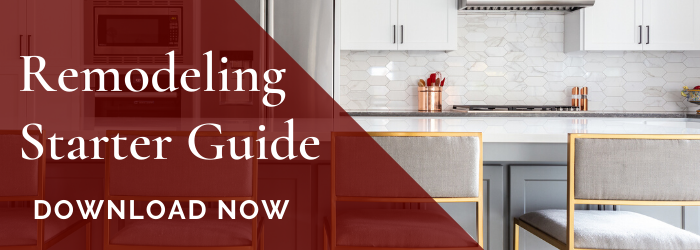If you own a historic home in Portland, consider yourself lucky. Yes, an older house comes with limitations, because builders and homeowners back then had different ideas about such matters as master bedrooms, closets, and bathrooms; and the original technology definitely isn’t up to today’s standards. But the historical significance, and the downright charm, of an old house are impossible to replicate. So let’s talk about what you can do to make your old home more livable in today’s world without hauling to the landfill everything that makes the house unique.
What’s Your Philosophy?
As the custodian of a piece of your neighborhood’s and the city’s history, you bear the responsibility of treating your home kindly. Here are four basic approaches to “fixing up” a historic property. The way you approach your project doesn’t have to be confined to just one of them:
- Preservation: Maintaining and repairing the historic materials in your home and keeping the form it has arrived at through generations of previous owners.
- Reconstruction: Re-creating parts of your home that have disappeared, such as a porch, in a historically appropriate way.
- Restoration: Returning your home to the way it looked during a specific era and removing vestiges of other periods.
- Rehabilitation: Changing or adding to your historic home to meet your modern-day needs, while doing as much as possible to retain its historic character. This approach probably is the most common with homeowners today, and it requires a designer and builder who know their way around historic properties.
Is it Allowed?
If you own a house in Portland that’s at least 50 years old, it could be listed on the National Register of Historic Places or the city of Portland’s List of Historic and Conservation Landmarks, either individually or as a contributing structure in a designated neighborhood. That will mean that you can’t do just anything you want to the outside of your home.
The city’s zoning code has design guidelines for such houses that are meant to preserve the qualities of a neighborhood that make it historically unique. Complying with the guidelines is mandatory, and you will need to go through a historic design review and get your plans approved. The guidelines pertain to factors such as historic character, architectural styles, and historic materials, features, and colors. The rules don’t forbid horizontal or vertical additions to buildings, but they do require the new construction to blend appropriately with the existing structure and other homes in the neighborhood.
What Needs Fixing?
As part of renovation of an older home, you’ll need to deal with any problems plaguing it. Is the roof leaking? Is the plumbing beyond repair? How solid is your foundation? Are termites chewing on your wood? Is the wiring dangerously outdated? Are bricks crumbling or falling off? Along with having character that can’t be replicated in a new house, old homes can carry plenty of structural and systems problems that would undermine any work you do on the home. Along with those structural issues, you’ll need to be aware of what might be called historical hazards that will raise their heads as work begins, such as asbestos and lead-based paint. Take care of them first as part of an overall remodeling project.
What Should You Save?
You’ll have to decide whether to preserve or replace the features of your home that fall under the scope of your remodel. Anyone who has tried to restore an old house or has bought one that has been stripped of its original features will tell you to think twice … or three times … before discarding anything original in your house, whether it’s a front porch or a push-button light switch. Here are some things to consider saving during the course of the remodel of your historic home.
The Wood
Maybe it’s window trim that needs to be stripped and refinished, or hardwood floors that have taken a beating and need work--you’re not going to be able to replace the quality of the old wood, and perhaps the workmanship, that your house had when it was built, without breaking the bank. Rather than replacing with new, consider what it would take to repair and refinish. Even if it costs more, you’ll end up with a higher-quality product.
Also, you should think very hard before you paint over stained and varnished woodwork. It’s almost impossible to go back, at least without tremendous effort, and you can be sure someone down the line will thank you for resisting the urge.
Built-Ins
What gives an old home its character? One definite contributor is the built-in, such as the bookcases flanking the fireplace, linen cabinets on the upstairs landing, the niche over the fireplace, or the butler’s pantry off the dining room. They look charming, and they can be as useful to you as they were the day they were built 100 years ago.
Hardware
If you’re really committed to living in an old house, you’re happy to accept its idiosyncrasies. Yes, brand-new locksets and doorknobs probably will work a little better, but is it worth throwing away history and beauty to achieve that smooth click? Same goes for hinges and drawer and cabinet pulls. There’s a reason that antique-hardware and reproduction companies stay in business: People want that look. If you have it, spend the time and money to clean it up or have it replated, but don’t throw it out.
Doors
Owners of new homes sometimes will look for an antique front door to give their house character from the curb. If you still have your original door, you’re a step ahead. That applies as well to interior French doors and pocket doors, which some designers are putting into new homes now.
Light Fixtures
You can buy reproduction pieces that incorporate modern technology. But you also can have antique fixtures rewired.
Landscaping
Even in the garden, you’ll find old growing things that would be hard to replace with new, such as antique roses and, of course, mature trees.
What Else?
Of course, not everything in every old house is worth saving. But it’s certainly worth stopping to think, and doing research, before you decide to get rid of any part of your historic home.
Talk to your architect or builder about your decisions before you do anything drastic. The most important thing you will do is choose the right builder for your old-home remodel. Because of the quirks that come with old houses, this step is critical. A contractor who has experience building only contemporary homes using modern methods and materials won’t be the best choice.
Over the years, many owners of homes in Portland’s lovely old neighborhoods have called on COOPER Design Builders to design and build renovations or additions. We love the unique character of old homes and have talented team members who will both design and build in a historically sensitive way to give you a home that meets your needs and stays true to its past.









